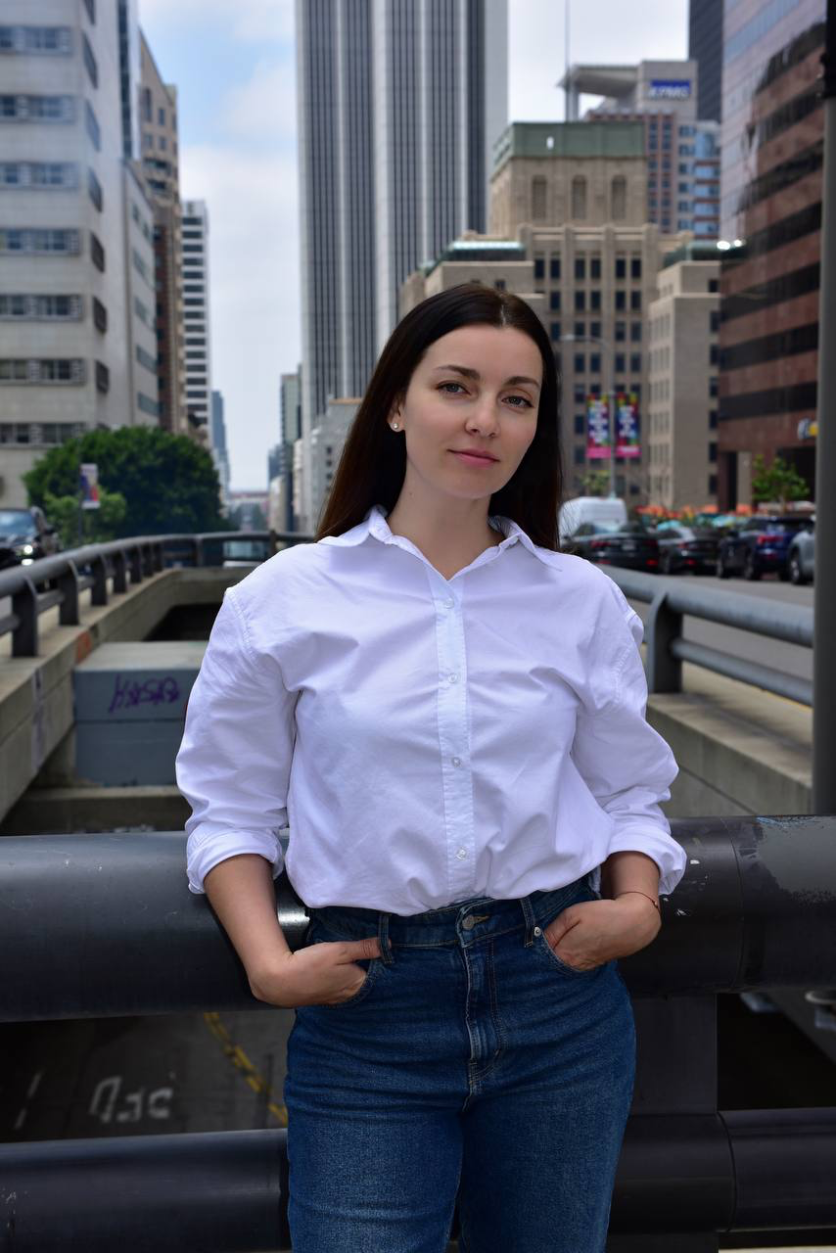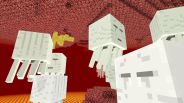
Irina Pritsker is a creative director behind numerous successful projects for world-renowned brands. For eight years, she led the design studio at the AdFactor advertising agency. In her work, Irina boldly integrates technologies—from personalized AI recommendations to virtual stores in VR—viewing them not as a threat to creative teams but as tools that expand their capabilities.
In this interview, she spoke about the changing role of design, why corporate websites remain relevant even in the age of social media, and how analytics helps make creativity truly effective.
Many advertising agencies have their own in-house design studios. What is their role in creating successful campaigns?
— A design studio within an agency is essentially its creative engine. It is responsible for the visual expressiveness of ideas, their adaptation to different formats and platforms. Good design amplifies the message, making it readable, captivating, memorable, and relevant. It makes the campaign itself more effective.
Speaking about AdFactor's experience, the agency decided to create its own design studio in response to market demand. At that time, I noticed that the volume of visual and creative tasks was rapidly growing, and the clients' focus was shifting towards more complex and high-quality design. That's when I took on the task of creating a separate unit that would help expand the range of services for clients. As its head, I needed to assemble a strong creative team—designers, creators, and managers.
Over time, it became clear that this was the right decision. The design studio became a magnet for new clients and complex creative projects, and helped the agency strengthen its position in the premium segment.
Tell us more about the projects you have worked on.
— Together with my team, I have solved a wide variety of tasks—from organizing fashion shoots in Milan to developing brand identity and creating comprehensive promo campaigns.
Personally, one of the most interesting projects for me was designing Casio's booth at the Faces and Laces—street fashion and contemporary culture festival, which attracts a young, creative audience. We had to create not just an exhibition space, but a full-fledged cultural environment that would become part of the urban context and encourage interaction. In line with my vision, the team built a visual language at the intersection of street aesthetics and Casio's signature clarity, incorporating interactive modules and photo zones. This produced a powerful effect: social media activity, high audience engagement, and strengthening Casio's position in the youth segment.
Among the notable digital projects, I would highlight the redesign of the corporate website for GlavElectroSnab—one of the leaders in industrial high voltage construction and comprehensive supply of electrical equipment. The company has many years of experience implementing large-scale energy projects for Russia's leading grid companies, including strategically important facilities. Under my leadership, the team managed to update the website while preserving the company's technical rigor and professionalism, making it modern and attractive to users.
The energy sector is a specific and rather complex field. How did you find a visual approach that allowed you to meet your objectives?
— This project was an interesting professional challenge for me because it involved the B2B segment. Previously, I mainly worked with the B2C direction, where various creative approaches are actively used.
To make the resource convenient for potential customers, I analyzed the current user experience. I studied client behavior, statistics, and interviewed managers—this allowed me to understand which site functions were in demand and where users encountered difficulties.
The visual part required significant changes—instead of an overloaded, outdated design, we proposed a modern, concise style. I decided to redesign the color palette, typography, and content structure so that everything would be clear and understandable. Particular attention was paid to the site's adaptability for mobile devices—this had not been implemented before.
As a result, the website became not only more aesthetically pleasing but also significantly improved engagement indicators. It turned into an effective working tool for the company. Thus, under my leadership, the team not only rebranded but also helped the company improve its business processes, which became a driver for its development.
What are the most relevant trends in corporate website design today?
— First of all, minimalism and simplicity. Companies are increasingly abandoning overloaded interfaces in favor of clean, concise solutions. This makes the website easy to navigate and the interaction with it clear and effective.
Second, responsive design which is especially important today. Given that mobile traffic continues to grow, adaptability has become not just a trend but a necessity. A site must look and function equally well on any device. This is pure UX and UI design, where the main focus is on convenience and intuitive interface clarity.
Good design helps the user navigate the site easily, making its use as comfortable as possible.
Dark mode is gaining popularity: more and more companies are implementing it on their websites because it reduces eye strain and helps save battery power on mobile devices.
And finally, personalization is always relevant. Using data about users improves the user experience. For example, a website can adapt content and offer recommendations based on the user's interests and previous behavior.
Today, the overwhelming majority of companies are represented on social media, and they invest significant resources in their development. Have corporate websites lost their relevance under these conditions?
— Of course not. Social media are excellent channels for quickly spreading content, communicating with audiences, and building communities. However, a company's website remains the main and most effective tool for deep communication with clients, partners, and possibly even potential investors. It is a space where a company can fully present its brand, talk about its values, products, and services—information that is difficult to convey in the format of short posts.
In addition, a website provides full control over content and design, allows for building long-term user journeys, and integrates e-commerce, CRM, and other important business tools, for example. Doing all this exclusively through social networks is extremely difficult.
How often, as a creative director, do you have to implement innovations?
— To create unique and memorable projects in the creative and advertising industry, it is crucial not only to keep up with the times but also to be one step ahead. I actively monitor new technologies and try to integrate them into my work.
Tell us about solutions that have helped achieve high results.
— One such solution was the implementation of a personalized recommendation system based on data analytics and user behavior patterns. The system tracks visitors' actions and offers them the most relevant products. I implemented this tool in several web projects, which significantly increased conversion rates and the average time users spent on the site.
I actively use artificial intelligence when working on various brand projects. I apply neural networks to test and create visual concepts for advertising materials. AI helps analyze various stylistic solutions and predict their effectiveness for the target audience. Thanks to this, I was able to significantly save time on decision-making and improve the overall effectiveness of the campaign.
I initiated the creation of virtual stores using VR technologies for one of the jewelry brands. Users received a life-like experience in a digital format—they could view products, zoom in on details, and change viewing angles. The introduction of this innovation not only increased the project's effectiveness but also significantly improved the user experience, which, in turn, led to increased sales and strengthened the brand's image.
AI is indeed being actively implemented in various fields. Do you think it might eventually displace designers and other creative professionals?
— We are all closely watching the transformations taking place in various industries since generative artificial intelligence became available to a wide range of specialists.
Speaking of designers, neural networks have certainly become an important tool for them—they help automate routine tasks, generate ideas, and create visual concepts. But I do not believe that AI can completely replace designers.
A designer is not just a task performer. They are someone who creates concepts based on a deep understanding of the brand, the target audience, and the cultural context. Today, a neural network can offer options, but it is the designer who makes the final decision, forms the idea, and combines aesthetics and functionality, taking into account the unique features of the project.
The same applies to other creative professionals—their value lies in their ability to see more broadly, think outside the box, and create solutions that go beyond algorithms, appealing to real human emotions and experiences.
Creativity is a process that includes intuition, emotions, and experience. These aspects are still beyond the reach of artificial intelligence. Neural networks can be excellent assistants and accelerators of the process, but they are not capable of fully replacing creative specialists.
Designers will continue to play a key role, although their functions may become more strategic—focused on decision-making, client interaction, and fine-tuning projects to cultural contexts.
ⓒ 2025 TECHTIMES.com All rights reserved. Do not reproduce without permission.




